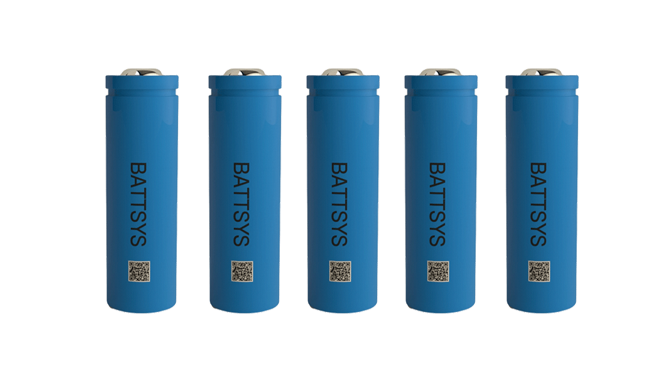Do 18650 batteries need to undergo UN38.3 certification?
Due to multiple safety accidents during the transportation of lithium battery brands both domestically and internationally, international organizations such as the United Nations and the International Air Transport Association, as well as relevant domestic departments such as the Civil Aviation Administration of China, require that the transportation of lithium battery brands must undergo UN38.3 certification and other tests in accordance with IATADGR requirements. Before transporting lithium battery brands, they must undergo high simulation, high and low temperature cycling, vibration testing, impact testing, 55 ℃ external short circuit, impact testing, overcharge testing, and forced discharge testing to ensure the safety of lithium battery brand transportation.
Conduct lithium battery brand testing according to the following standards

Lithium batteries UN38.3 certification (lithium batteries UN38.3 test)
Conduct 8 safety performance tests in accordance with the requirements of Part 3, Clause 38.3 of the Manual of Tests and Criteria for the Transport of Dangerous Goods, as recommended by the United Nations
UL 1642-2005IEC 61960GB/T 18287-2000QB/T 2502-2000 SN/T
1414.3-2004 Operating Procedures for Rechargeable Lithium Battery Brands Transported as Non Dangerous Goods
The types of batteries controlled by UN38.3 include
Fuel cell UN38.3 Alkali manganese battery UN38.3 Dry cell UN38.3
Mobile phone lithium battery brand UN38.3 button battery UN38.3 laptop battery UN38.3 lithium-ion battery manufacturer UN38.3 import and export battery UN38.3 nickel cadmium battery UN38.3 nickel hydrogen battery UN38.3 lithium-ion battery manufacturer for cellular phones UN38.3 portable lithium secondary single cell battery UN38.3 battery UN38.3 There are a total of nine certification testing projects, as follows:
Lithium battery brand UN38.3 certification pre condition test (single or fifty cycle charge and discharge) Lithium battery brands need to undergo certain charge and discharge tests before conducting the following 8 tests to ensure that the battery reaches the test state:
Perform a single cycle charge and discharge test on Group A batteries (time 4-6 hours); Perform fifty cycles of charge and discharge tests on Group B batteries (time 8-10 days)
1. Battery UN38.3 height simulation test
At a pressure of ≤ 11.6kPa and a temperature of 20? Under the condition of ℃, store for more than 6 hours;
2. Battery UN38.3 thermal test
Conduct high and low temperature impact tests under conditions of 75 ± 2 ℃ and -40 ± 2 ℃, store at the extreme temperature for ≥ 6 hours, and switch between high and low temperatures
Time ≤ 30 minutes, impact 10 times, store at room temperature (20 ± 2 ℃) for 24 hours, and the total test time should be at least one week;
3. Battery UN38.3 vibration test
Complete one reciprocating logarithmic sweep sine vibration from 7Hz to 200Hz within 15 minutes, and 12 three-dimensional vibrations within 3 hours;
4. Battery UN38.3 impact test
150g, 6ms or 50g, 11ms half sine impact, 3 times for each installation direction, a total of 18 times;
5. Battery UN38.3 external short circuit test
Short circuit under the condition of 55 ± 2 ℃ and external resistance<0.1Q, and the short circuit time lasts until the battery temperature returns to 55 ± 2 ℃
After 1 hour, observe for 6 hours;
6. Battery UN38.3 collision test
A 9.1kg weight was dropped from a height of 61.5cm onto a battery with a 15.8mm round rod. The surface temperature of the battery was measured and observed for 6 hours
7. Battery UN38.3 overcharge test
Under the conditions of twice the maximum continuous charging current and twice the maximum charging voltage, overcharge the battery for 24 hours and observe for 7 days;
8. Battery UN38.3 forced discharge test: Connect the battery in series with a 12V DC power supply and perform forced discharge at the maximum discharge current for 7 days.
The cycle required for UN38.3 battery production is 15 working days, and the sample required for UN38.3 battery production is 15 sets of finished products with 22 battery cell samples. The voltage, capacity, watt hour, and model (watt hour=voltage * capacity) must be indicated on the sample.
The UN38.3 certification for lithium battery brands has requirements for battery shipping methods. If the shipping methods are 965 and 966, a 1.2-meter drop test is also required to evaluate the safety of accidental drops during battery transportation.
There are three ways to ship lithium battery brands:
1. Batteries are shipped separately; 965 shipping method requires a 1.2M drop test.
2. The battery and equipment are packaged together for shipment; The 966 shipping method requires a 1.2M drop test.
3. The battery is installed on the device for shipment; The 967 shipping method does not require a 1.2M drop test.
